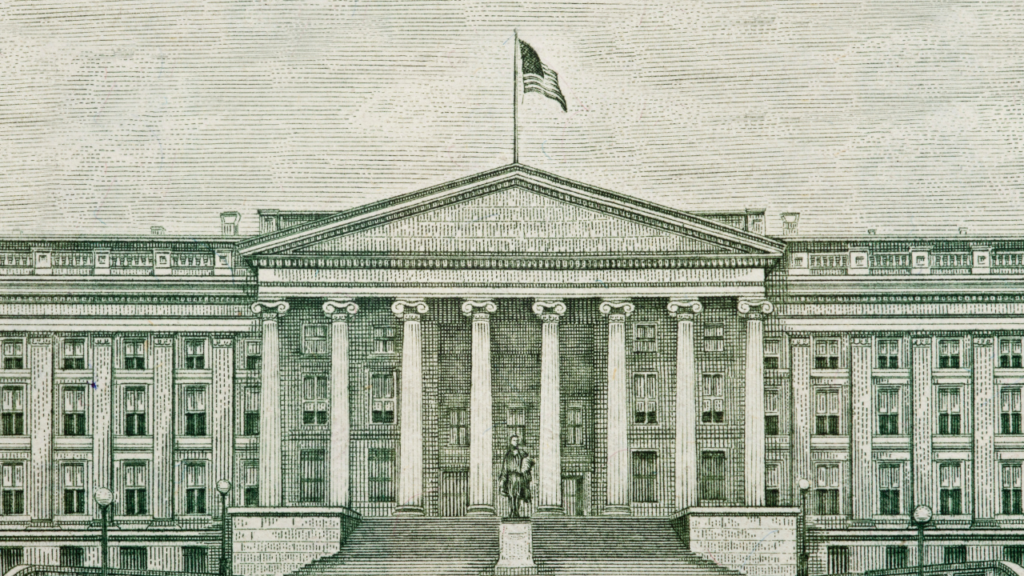
📢 About This Summary
Summary based on this YouTube discussion; edited and annotated by Time Health Capital. Our team routinely watches, distills, and reacts to leading content to bring you readable insights and conversation starters.
“If you have to manufacture demand for your own debt, how safe is it really?”
📝 Summary of Key Points
Treasury buybacks are being used to manage demand and stabilize the bond market, but they often represent liability reshaping rather than true debt reduction. A shift toward short-term issuance improves near-term liquidity and flexibility, yet it raises rollover and confidence risks. For investors, the buyback program is a signal to monitor market plumbing (repo, dealer inventories, issuance composition) and consider durable assets and optionality in portfolio construction.
🏛️ Treasury vs. The Fed: Who Really Holds the Purse Strings?
The Fed sets monetary policy; the Treasury issues and manages government liabilities. When the Treasury repurchases securities, it isn’t always reducing the net liability — it can be re-profiling maturities or sterilizing issuance. That difference matters: policy tools that look like fiscal discipline can in practice be market support actions, masking the structural funding gap.

Viewed this way, buybacks are part of a broader toolkit to ensure auctions clear and yields remain orderly; they are not necessarily evidence of shrinking obligations.
♻️ Borrowing to Pay Off Debt
Many buybacks are funded by fresh issuance—often shorter-dated paper or bills. That’s operationally similar to refinancing: one liability replaced by another. It stabilizes cash flows but leaves the overall burden intact and, in some scenarios, increases sensitivity to future rate moves when rollovers happen at higher costs.
Over time, repeatedly managing liability profiles without reducing principal can raise effective debt servicing costs and magnify fiscal risk if market sentiment shifts.
⏳ Why the Shift Toward Short-Term Debt?
Short-term issuance is attractive right now because investors prefer flexibility in a high-rate, uncertain inflation environment. Short paper reduces near-term interest expense and gives the Treasury optionality to react quickly—yet this flexibility is a two-edged sword: it reduces fixed-cost certainty while raising rollover exposure.
- Market Demand: Investors hesitate on long-duration exposure when rates are elevated or uncertain.
- Flexibility: Short maturities let policymakers adjust strategy faster.
- Optics: Active issuance and buybacks create the perception of orderly market management.
⚠️ Risks Behind the Buyback Program
Manufactured demand or heavy short-term issuance can mask fragility. Rollover risk rises as the share of short-duration paper grows; if investor appetite wanes, refinancing costs could spike rapidly. Additionally, engineering demand undermines price discovery—if the market relies on the issuer to maintain liquidity, confidence in the asset’s “risk-free” label may weaken.

In extremis, these dynamics can cascade into broader funding stress across banks, repo markets, and leveraged participants who depend on Treasury collateral.
🔎 What Investors Should Watch
Don’t wait for headlines. Monitor the plumbing: dealer inventories, repo and funding spreads, the mix of bills vs. notes, and any signs of secondary-market stress. Those indicators show whether buybacks are temporary support or a symptom of deeper confidence erosion.
- Dealer balance sheets and their willingness to make markets.
- Repo & funding spreads as early stress indicators.
- Share of short-term issuance and frequency of buybacks.
✅ Final Thought
Buybacks can buy time, but they are not a substitute for sustainable fiscal strategy. When the issuer becomes a key demand source for its own paper, that is a signal worth acting on — not a comfort. For long-term planners, prioritizing durable assets, preserving optionality, and stress-testing exposure to rapid rate moves is prudent.
▶️ Prefer to Watch?
Watch the original discussion that inspired this piece:
💬 Dr. Ozoude’s Commentary
❓ Questions & Implications for Our Readers
- How would a sudden rise in U.S. yields affect your cash flow and liabilities?
- Do you have a plan to access liquidity quickly if funding markets tighten?
- Which "real" assets in your portfolio serve as practical insurance against fiscal fragility?
💡 Ready to explore allocation and risk-management strategies for a fragile bond market? Schedule a call with Dr. Ozoude and explore strategies tailored to physicians.
Schedule a Call with Dr. Ozoude© All original content, trademarks, and media referenced herein belong to their respective creators. This article is a third-party summary created by Time Health Capital for educational and informational purposes only. It does not constitute investment advice. Please do your own research before making any financial decisions.

From a clinician’s lens, repeated symptomatic fixes are a warning sign—treating the symptom without addressing the root makes the condition chronic. The Treasury’s buybacks look like symptomatic relief: they calm markets temporarily but don't change the underlying disease. For physicians and professionals building long-term security, this argues for humility in "safe" labels, diversified holdings that include tangible insulation, and maintaining liquidity to preserve optionality when policy-driven price moves create opportunities or risks.